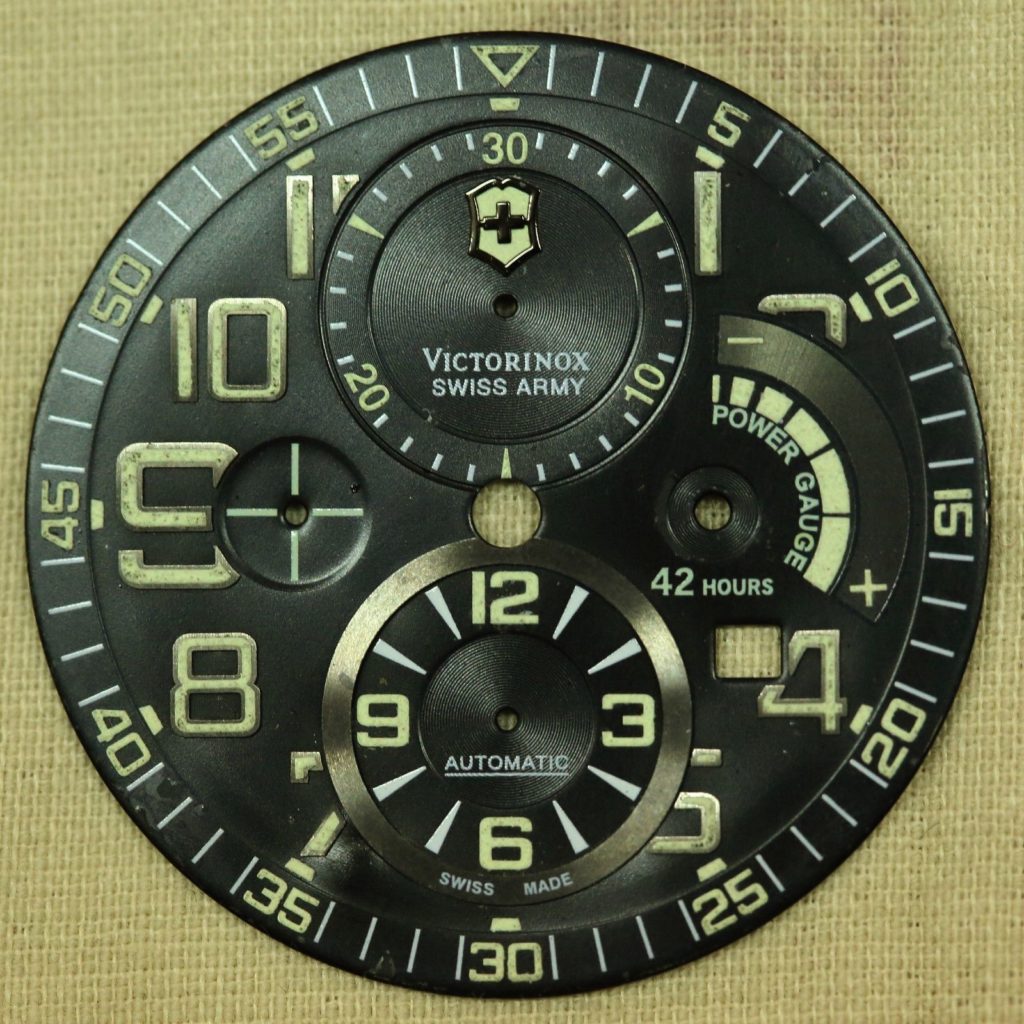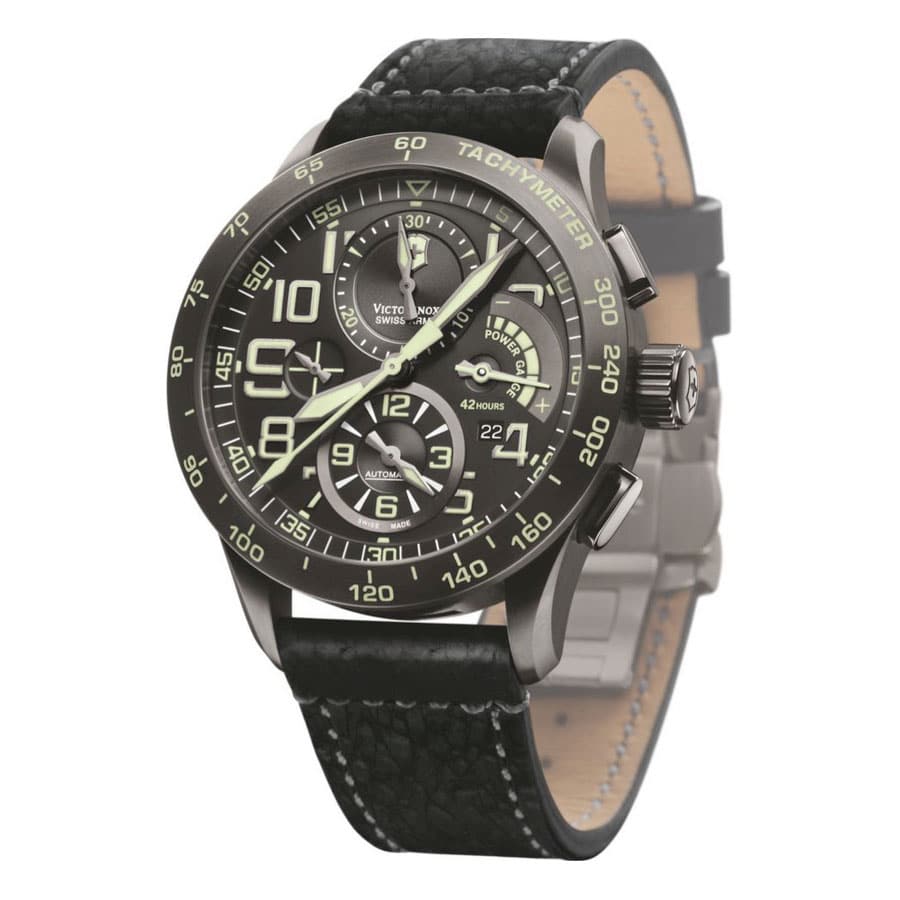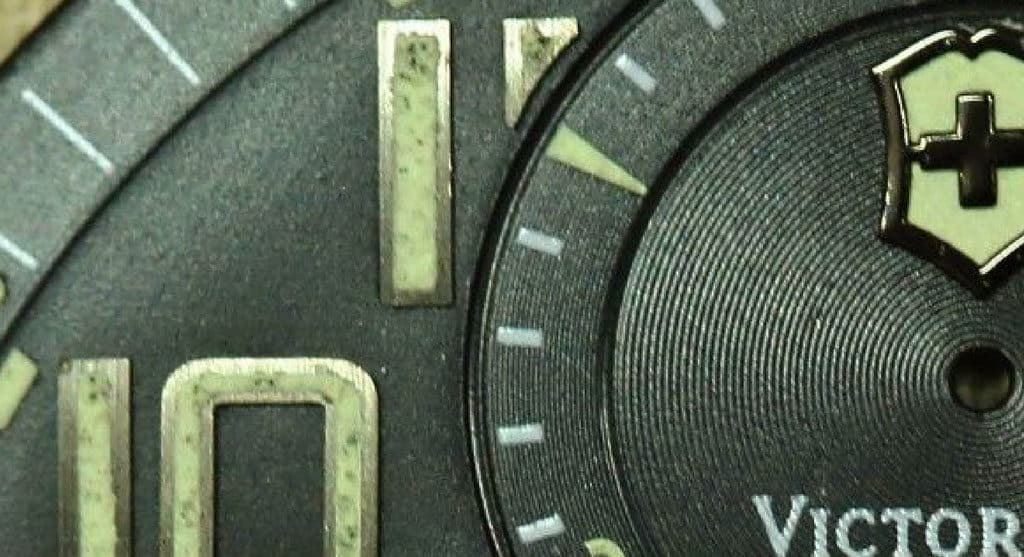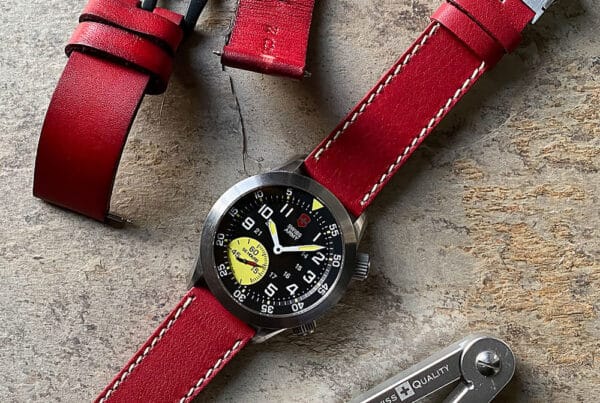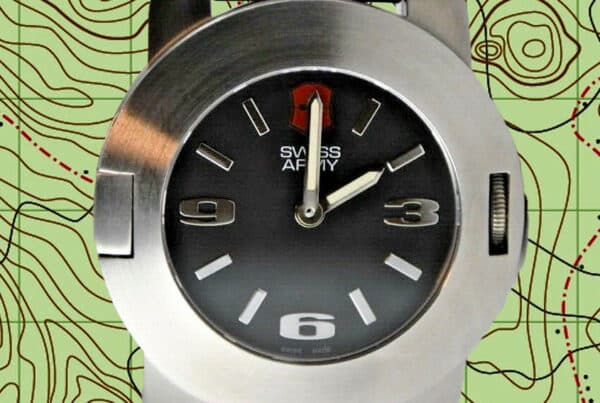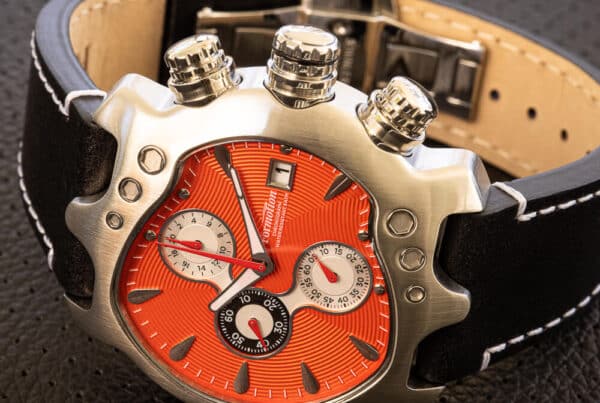What you are looking at here in all its complicated manufacturing glory is a loose dial from Victorinox Swiss Army’s 2008’s ultra rare, limited-edition Airboss Mach 6 Power Gauge, model #241308. The dial was created for a relatively small run of watches that look like nothing else that Swiss Army has ever made. I came across it on eBay and tried to buy it as a novelty. I had hopes of building a 1-of-a-kind watch around this amazing dial. I lost the bid, but that didn’t stop me from writing about it. Thanks to Francisco for letting me use his auction photos. Check out his web site at www.ipreferanalogues(now defunct) for a wide selection of amazing vintage and used watches for sale.
Even though I’m writing another article about this limited-edition watch, for now, I just wanted to concentrate on its dial. It represents a mystery that brings up more questions than answers. Going to Victorinox for help is not a great option. I keep hoping that some old-timer who knows the history of Victorinox and has a passion for their watches will answer their phone, but that is probably a pipe dream. The reason that the Watch Hunter blog exists is that the information that I want for many Swiss Army models is not always easily found on the internet. Anyway, back to the loose dial…
The Victorinox Swiss Army Mach 6 Power Gauge had an MSRP of $4,000 in 2008. Whew! That was big money then, and it still is today! There doesn’t seem to be a good reason for this dial to be taken off such a valuable watch. Many questions come to mind:
- Why would this dial be loose and not with the rest of the watch?
- Was the original watch damaged leaving only spare parts?
- Was it a spare dial not used in the 333 production run?
- Was it a test dial used to test the tools that engraved the various surface treatments?
- Was it a dial with errors that did not pass inspection?
- Was it a sales or manufacturer sample not to be seen outside of the company?
- Was it used in advertising photography or as a display at a trade show?
Swiss Army’s Airboss Mach 6 Power Gauge dial, by comparison, is much more complex. It is worthy of its limited-edition status. It is a masterful example of a watch company flexing its design and manufacturing muscles. I would suspect that the designer and manufacturing team involved with producing this watch were happy with the results. It’s a home run!
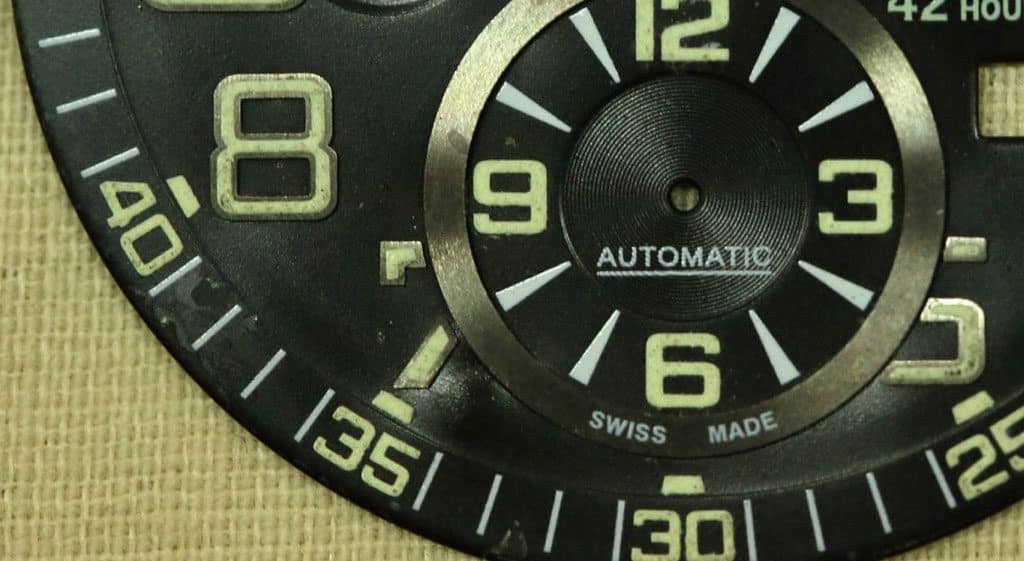
Layers of eye candy are applied to this very special limited-edition dial. Photo: www.ipreferanalogues.com
Swiss Army used multiple manufacturing processes to enhance the visual interest of the dial. These included printing in white paint and also brightly glowing Superluminova lume. They created a multi-layer dial that had embossing, debossing, engraving, metal surface finishing, applied numerals and an applied logo. That represents a lot of watchmaking techniques. When I mapped the processes in the diagram below, I was surprised because some of them can only be seen under magnification. Swiss Army did not cut corners on this watch dial, and they have yet to repeat anything of this complexity (that I know of) and in such small quantities.
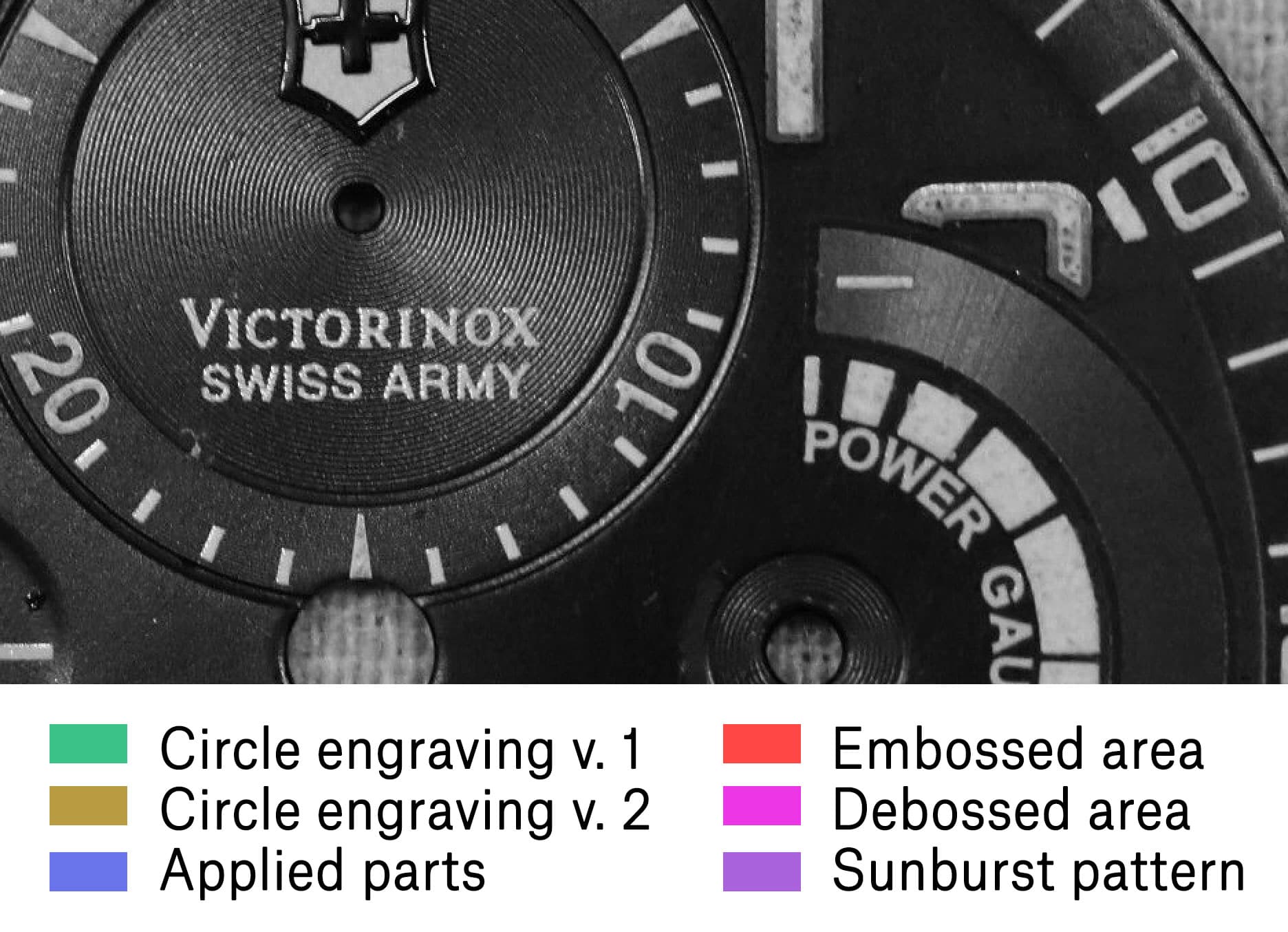
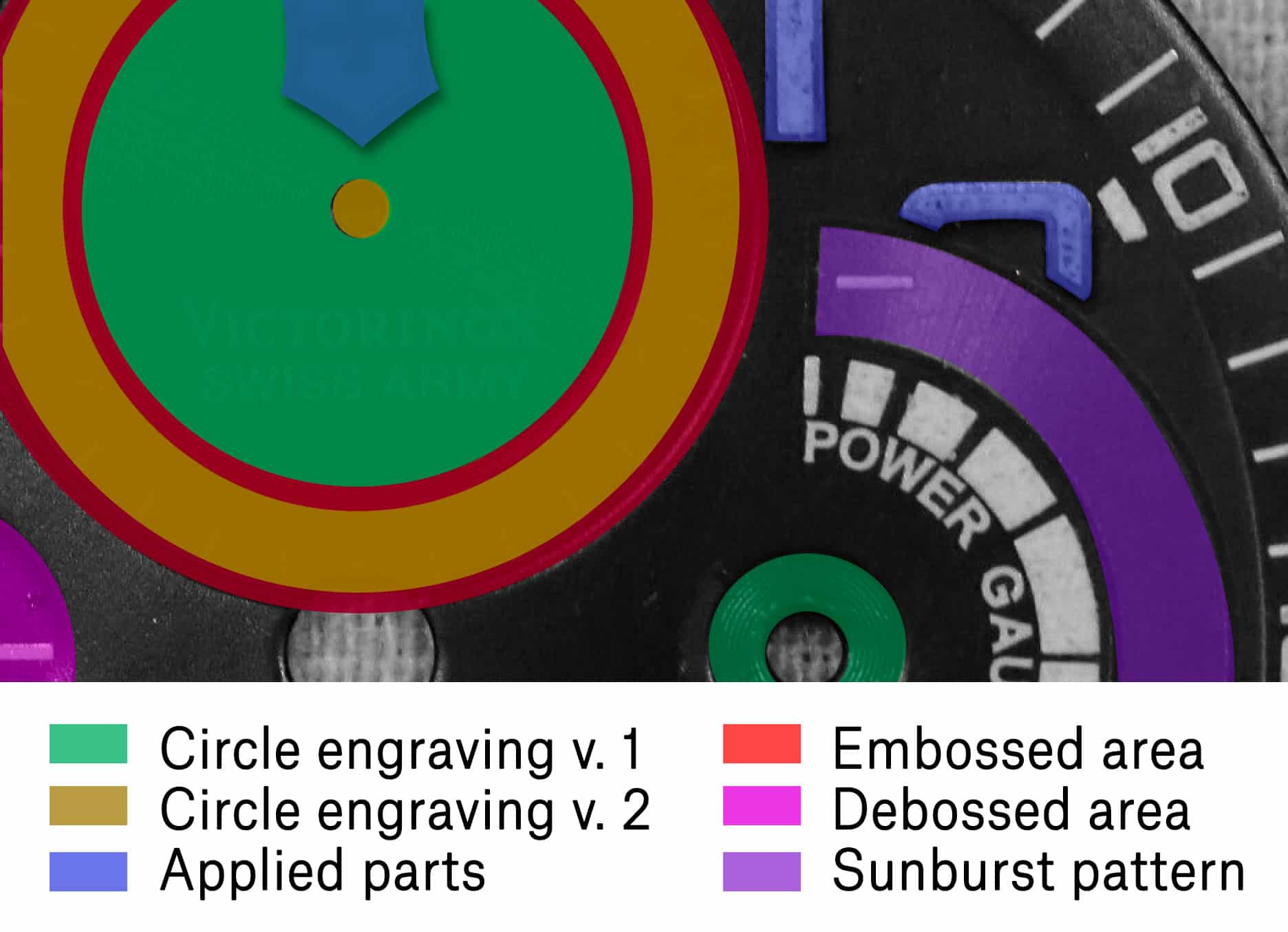
If you are not familiar with watches, then the diagram might need some further explanation. There are 2 different gauges of circular engraving on the sub dials of the watch. Circle engraving v. 1 is a wider gauge easily seen with the naked eye. Circle engraving v. 2 appears as a border around the sub dials and is ultra-fine and subtle. I did not even realize it was there until I magnified it. The naked eye cannot necessarily see the microgrooves, but it does give the area a different surface quality than the larger engraving style. The best way to describe it is to say it looks more matte. Applied parts are separate metal pieces that are glued to the surface of the dial giving them shiny edges and a 3-D effect. Embossed areas stand out higher in relief and debossed areas are indented lower in the dial surface. The sunburst pattern has metal graining that emanates from a central point of the power gauge sub dial like sunbeams. I did not even mention the additional polishing, directional graining, a third circular graining on the applied items, but that is present too.
Examining this particular dial shows that it’s not in pristine condition, or specifically in the condition that would be installed into a retail product. There are small scrapes, chips, uneven luminescent paint, and stains. Also, we see the luminescent paint in the large applied numerals looks ragged and appears to spill over the crisp geometric edges. This could be a trick of the light or more of an indication of the condition this dial is in.
In this scenario, I think that the stains of time have disguised the dial’s original appearance. This could be called a patina in collector watch circles, but I might call it something else like surface wear. Patina shows signs of age that naturally occurs as watches get older. That could mean the luminescent paint no longer glows and darkens in color. Sometimes, the surface of an old watch dial becomes finely cracked or changes in unexpected ways like when so called “tropical dials” fade from black to brown.
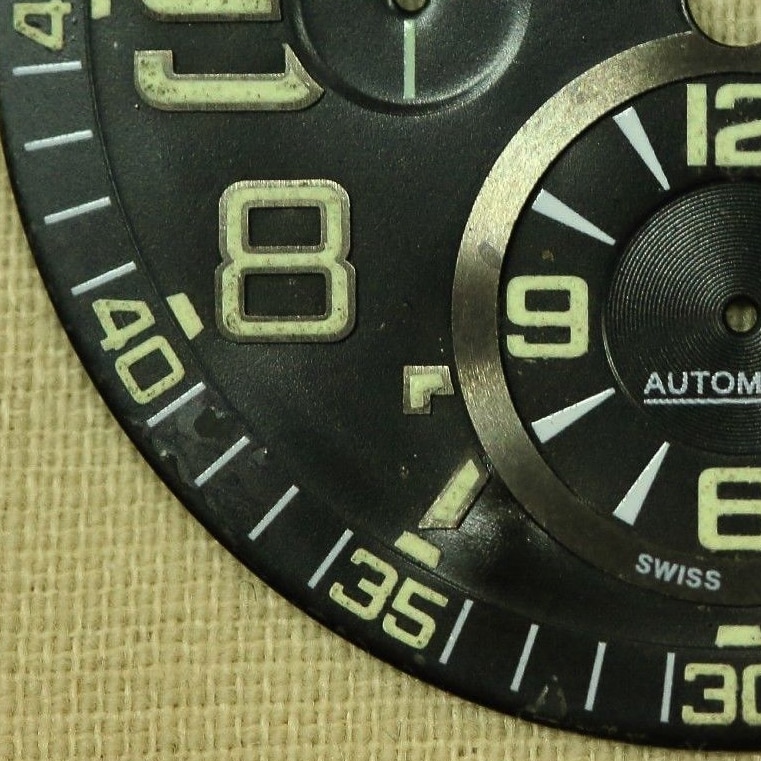
White surface staining indicates possible contact with liquid or moisture. Photo: www.ipreferanalogues.com
Or perhaps, this dial was casually stored with something else on top of it so that it suffered scuffing on the raised surfaces and chipping on the dial edges. Imagine a group of dials stacked on each other without protection between them or this dial stored in a drawer with other parts. I am not suggesting this was done by the seller who has been in business a long time, but who knows where this dial was before he got it. There is a good chance that this dial just needs a cleanup by a professional who knows how to remove dirt and leave paint and surface details unmarred.
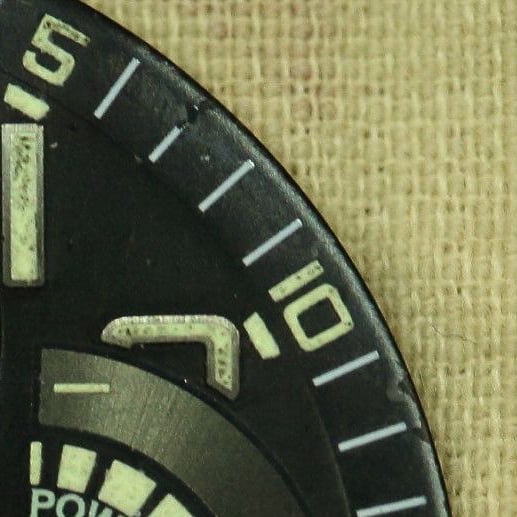
Chips on the edges of the dial might indicate that it hit something. Photo: www.ipreferanalogues.com
Francisco also provided photos of the dial’s reverse side, which is something seldom seen by people other than watchmakers. It requires disassembly of the watch including removing the crown, hand sets, and extraction from the case to see this part by itself. We can clearly see debossing, drilling, rubbing and underlying circular machining. There are even a few etch marks that look hand made. There is a large area in the lower right that looks scratched out. Could that mean something like this dial was rejected? The serial number shows what I think is the model and date of 2008, but this could just be a coincidence. I believe the dial is missing its feet, which are like small metal posts that are used to connect it to the movement. Another clue perhaps?
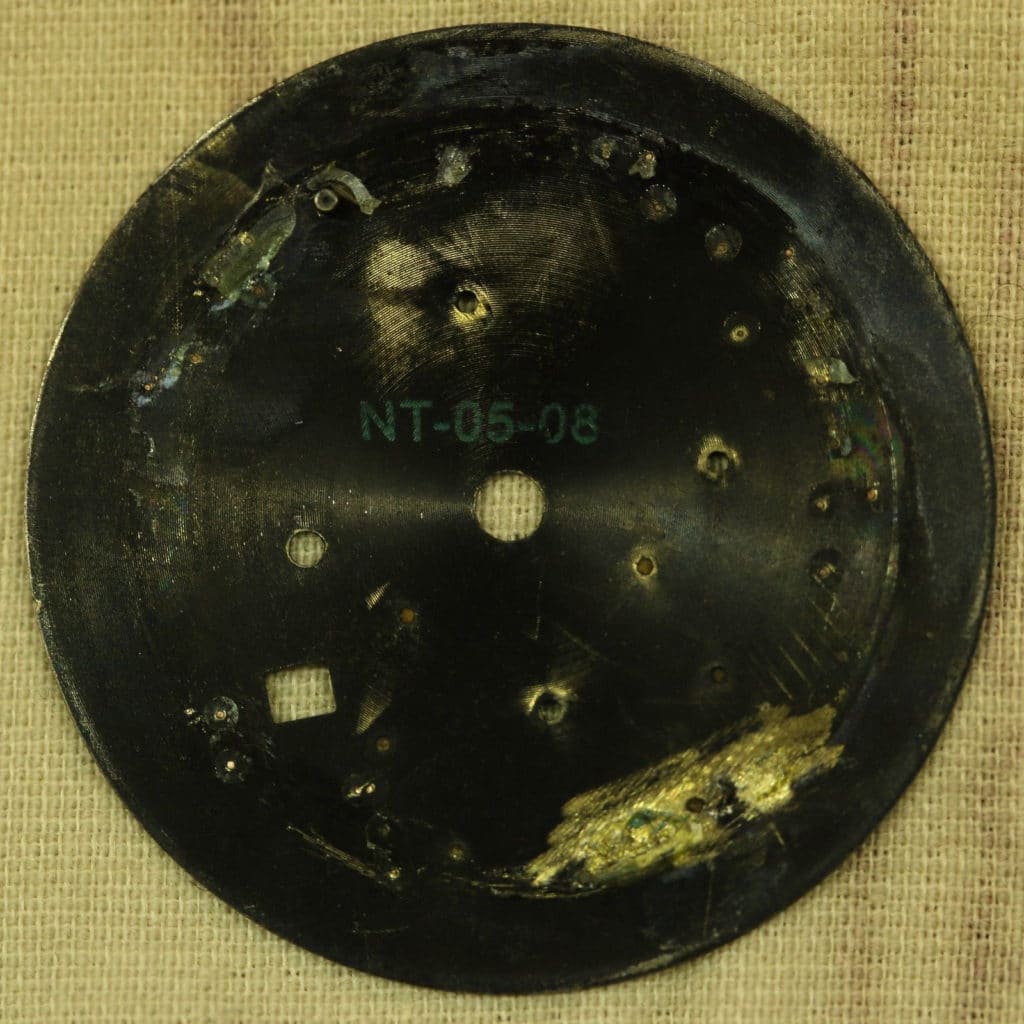
The rarely seen back side of a Swiss Army Airboss Mach 6 Power Gauge. Photo: www.ipreferanalogues.com
My final guess about this dial is that it’s most likely a final or near-final version since all of the printing and finishing processes are in place. Maybe it was once installed into one of the 333 limited-edition watches and an accident separated it from the rest of the watch. However, the lack of the feet on the back of the dial means that it cannot be used without re-soldering replacements back on. Maybe it did not get past the inspection phase. I am just not sure, so it will probably remain a mystery. It would be interesting to know how this watch traveled from Switzerland and ended up in Chile, where ipreferanadogues (now defunct) is located.
Maybe there are only 332 out of 333 of these limited-edition watches left in the world. I would love to track them all down and see where they scattered across the globe since 2008. This is only a novice opinion about the mysterious workings of a Swiss watch maker, so if any expert out there wants to set the record straight, then please contact me.


